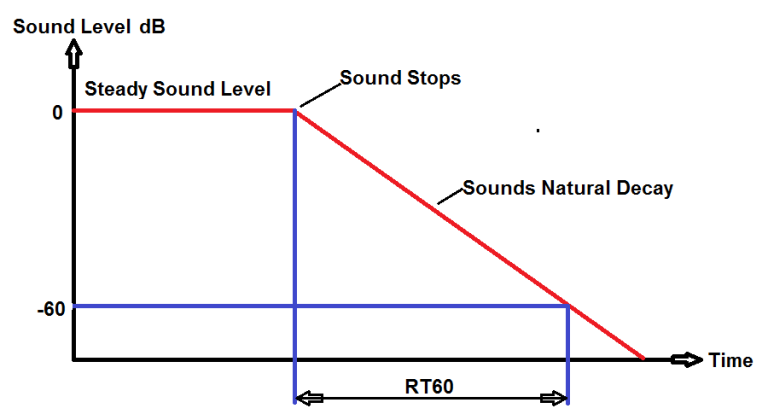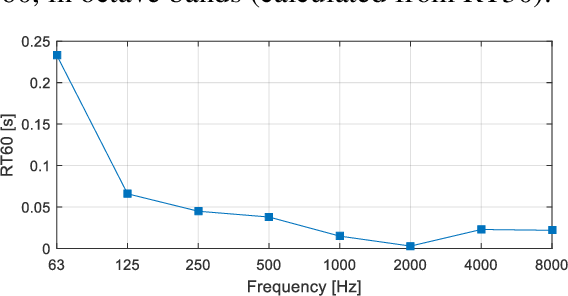RT60
음원 정지 후 소리의 60dB 감쇠를 기준으로 한 잔향 시간을 측정한 값.
공간의 잔향 정도를 나타내는 값.
RT60은 음향 환경에서의 잔향 시간(Reverberation Time)을 나타내는 지표입니다. 잔향 시간은 소리가 소멸되기까지 소요되는 시간을 의미하며, 주로 반사된 소리의 에너지가 60dB로 감소하는 데 걸리는 시간을 측정합니다. RT60은 공간의 음향 특성과 반사, 흡수, 분산 등의 특성을 나타내는 중요한 파라미터로 사용됩니다.
RT60은 음향 환경에서의 잔향 시간을 측정하여 공간의 음향 특성을 평가하고 설계하는 데 사용됩니다. 일반적으로 RT60이 길면 길수록 공간은 더 많은 잔향을 가지고 있으며, 음악이나 음성의 자연스러운 퍼짐과 균일성을 나타낼 수 있습니다. 그러나 너무 긴 RT60은 음향의 정확성과 명확성을 저해할 수 있습니다.
RT60은 다양한 방법으로 측정될 수 있습니다. 일반적인 측정 방법은 소리 신호를 발생시켜 시간 경과에 따른 소리의 에너지 레벨을 측정하고, 60dB로 감소하는 데 걸리는 시간을 계산하는 것입니다. 이를 통해 공간의 잔향 시간을 알 수 있고, 이를 기반으로 음향 환경을 평가하고 조정할 수 있습니다.
RT60은 음악 스튜디오, 공연장, 강당, 회의실 등의 음향 설계 및 조정에 중요한 지표로 활용됩니다. 적절한 RT60 값은 해당 공간의 용도와 음향적 목표에 따라 달라질 수 있으며, 음악, 음성, 공연 등에 최적화된 음향 환경을 조성하기 위해 고려됩니다.
RT60
RT60, or Reverberation Time 60, is a measurement of the time it takes for the sound level to decay by 60 decibels (dB) after the source sound has ceased.
It serves as an indicator of the degree of reverberation in a space and is used to characterize the acoustic properties of an environment. RT60 quantifies the time it takes for sound to decay, primarily focusing on the duration it takes for the reflected sound energy to decrease by 60 dB.
RT60 is a crucial parameter used in the evaluation and design of acoustic environments. Longer RT60 values generally indicate spaces with more pronounced reverberation, contributing to a sense of natural diffusion and uniformity in music or speech. However, excessively long RT60 values can potentially compromise sound accuracy and clarity.
RT60 can be measured through various methods, but a common approach involves generating a sound signal, recording the sound energy levels over time, and calculating the time it takes for the sound to decrease by 60 dB. This measurement provides insights into the acoustic characteristics of a space and allows for the evaluation and adjustment of the acoustic environment.
RT60 is widely employed in the design and calibration of acoustic settings such as music studios, concert halls, auditoriums, meeting rooms, and more. The appropriate RT60 value may vary depending on the specific usage and acoustic goals of the space, aiming to create an optimized acoustic environment for music, speech, performances, and other applications.
주파수에 따른 RT60
16Hz 의 주기는 60ms 이다.
그렇기 때문에 저음역대에 대해서 RT60 값은 매우 높은 수치가 필연적으로 나타날 수 밖에 없다.
무향실에서도 125Hz 이하는 급격하게 값이 커지게 됨을 볼 수 있는데, 이것은 실제의 잔향이 아니고 사실은 저주파수의 파장의 길이가 길기 때문일 수 있다.1)
역시 주파수가 저역대로 내려갈수록 저주파수의 파장의 길이가 길기 때문에 기본적으로 이와 같은 RT60 그래프가 표현된다.
Reference
[공지]회원 가입 방법
[공지]글 작성 및 수정 방법





